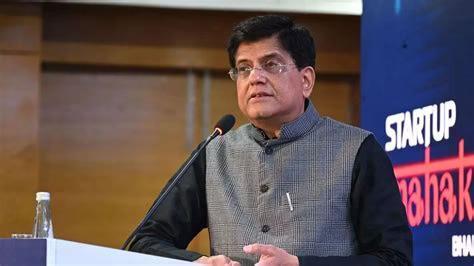
Indian Brands Go Global: Competing on Design & Quality
In recent years, the global market has witnessed a significant shift in the way Indian brands approach international expansion. Gone are the days when Indian companies would focus solely on attracting foreign brands to set up shop in the country. Today, Indian brands are taking the initiative to go global, competing on design, quality, and innovation. This transformation is driven by a combination of strong manufacturing capabilities, strategic marketing, and a growing desire to establish themselves as serious global contenders in various industries.
According to Dheeraj Sinha, CEO of FCB India, “Indian brands are winning on design, quality, and competitiveness globally. They are not just exporting products, but also experiences, values, and emotions.” This sentiment is echoed by many industry experts and entrepreneurs who believe that Indian brands have finally found their footing in the global market.
Design and Quality at the Forefront
One of the key factors contributing to Indian brands’ success abroad is their focus on design and quality. Indian companies have recognized the importance of creating products that not only meet but exceed international standards. This has led to significant investments in research and development, as well as the adoption of cutting-edge technology and manufacturing processes.
Take the example of HUL’s Lux, a popular soap brand that has been successful in the global market. Lux has been praised for its high-quality products, sleek packaging, and effective marketing campaigns. Similarly, Titan’s watches and accessories have gained a reputation for their stylish design and durability.
In addition to product design, Indian brands are also focusing on creating memorable brand experiences. This includes developing engaging marketing campaigns, building strong online presence, and establishing a robust distribution network. For instance, Tanishq, a popular jewelry brand, has been successful in creating an emotional connection with customers through its thought-provoking advertising campaigns.
Competitiveness and Cost Advantage
Another significant advantage Indian brands have is their competitive pricing and cost advantage. With labor costs significantly lower than many developed countries, Indian companies can produce high-quality products at a lower cost, making them more attractive to global consumers.
This cost advantage has enabled Indian brands to compete effectively with international players, particularly in the consumer goods and technology sectors. For instance, Micromax, a popular smartphone brand, has been successful in competing with global giants like Samsung and Apple by offering affordable and feature-rich devices.
Strategic Marketing and Localization
Indian brands are also gaining traction abroad by adopting a strategic marketing approach that takes into account local preferences and cultural nuances. This includes partnering with local businesses, understanding regional preferences, and adapting products to meet specific market needs.
For instance, Hindustan Unilever’s (HUL) Project Shakti has been successful in rural areas of India by empowering local women to become entrepreneurs and sell HUL’s products. Similarly, Tata Consultancy Services (TCS) has been successful in the global IT market by providing customized solutions to clients and building strong relationships with local partners.
The Rise of Indian Brands in Global Markets
The success of Indian brands in global markets is evident in various sectors. In the consumer goods segment, companies like HUL, Procter & Gamble, and Nestle are well-established players with a significant presence in international markets.
In the technology sector, Indian companies like Wipro, Infosys, and TCS have made a mark in the global IT market, providing services to clients across the world. Similarly, in the automotive sector, companies like Tata Motors and Mahindra & Mahindra have expanded their operations globally, establishing a presence in countries like the UK, South Africa, and the Middle East.
Challenges and Opportunities
While Indian brands have made significant strides in global markets, they still face several challenges. One of the key challenges is the need to maintain quality and consistency across different markets and products. This requires significant investments in research and development, as well as the adoption of quality control processes.
Another challenge Indian brands face is the need to adapt to changing consumer preferences and market trends. This requires a deep understanding of local cultures and preferences, as well as the ability to innovate and respond quickly to changes in the market.
Despite these challenges, the opportunities for Indian brands in global markets are vast. As the global economy continues to evolve, there will be an increasing demand for high-quality products and services that meet local preferences and cultural nuances. Indian brands that can adapt to these changes and maintain their focus on design, quality, and innovation are well-positioned to succeed in the global market.
Conclusion
In conclusion, Indian brands are making a significant impact in global markets by competing on design, quality, and innovation. Their focus on creating high-quality products, memorable brand experiences, and competitive pricing has enabled them to establish a strong presence in various sectors. While challenges remain, the opportunities for Indian brands in global markets are vast, and those that can adapt to changing market trends and consumer preferences are well-positioned for success.
Source:






